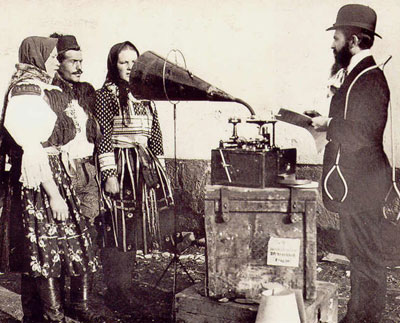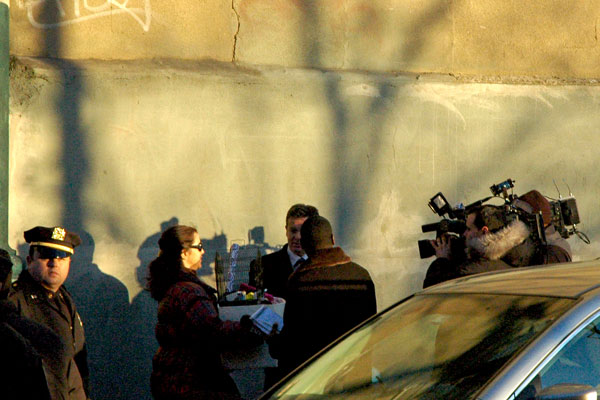
Janáček in a Slovak-Moravian borderland village a century ago, recording singers onto wax
the performance
Did anyone see either of the two performances of the Gotham Chamber Opera's "Scenes of Gypsy Life" presented this week at the Morgan? Barry and I went on Wednesday, but at this point I'm feeling I must have imagined the experience. While the singers were not to be faulted and in fact should be commended for their courage, the production was otherwise really bad on virtually every count.
I've seen nothing in the media suggesting it ever happened (only pre-performance announcements). I waited almost two days before posting this because I thought that maybe I totally missed something. I was hoping to read a review which might explain what the brutal staging was all about, but now I think that reviewers who would ordinarily be inclined to support the company weren't able to shine a better light on this weird evening than I could.
Basically, I'd like to know whether we're the only ones who thought it was ill-conceived and incredibly ugly, not to say sadistic and shockingly racist. Neither the poets nor the composers, Antonín Dvořák and Leo Janáček, who set their words into the music heard this week, had intended a slander of the Roma people with whom they all shared a culture. They had all, in fact, intended homage.
And it wasn't just the director's treatment of all three gypsies as stock characters. Actually, if there were any reason for the existence of an anti-defamation organization for farm boys represented as monsters, it too would have to be interested in Eric Einhorn's direction. The raw setup should have presumed one wholesome youth, four pretty gypsy girls, a gentle pastoral scene, music. How (or why) does this scenario become so intensely horrible?
This all seems especially weird since I've been to and enjoyed most of this company's early productions and I would expect to be a part of its audiences in the future. The inspired and often masterful mounting of relatively-obscure operas, with exciting casts and designers, and presented in modest-sized auditoriums: What's not to like?
the auditorium
I wrote just now that I expected to go back to the Gotham, but I will never go back to a performance at the Morgan library. It's not so much the architecture of Renzo Piano's expensive new addition, which is a mess of mall-inspired multiple planes and giant muntins in a confusing layout forced into the spaces separating several worthy late nineteenth and early-twentieth-century buildings, as if these spaces were only so many cavities which needed filling.
It's the auditorium itself, Gilder Lehrman Hall: I had no idea the architect had retractable feet. But even such a wondrous anatomical gift couldn't justify making those of us who don't suffer the consequences of the shape and arrangement of the seats in his little wooden hall. The over-hyped super-star museum architect forgot that most of us ordinary mortals, even when seated, have feet attached to and extending forward from their legs.
Hey, we don't look anything like the tiny folks for whom Carnegie Hall was designed in 1890 (and refurbished to the same specs a hundred years later); we're the giants who showed up in 2008, and this is a totally new building!
UPDATE: The NYTimes review, by Vivien Schweitzer, finally appeared in Saturday's edition. It praises what should be praised and at least as edited for publication almost totally ignores what I found deeply troubling. There will be no more performances, so the review cannot affect a potential audience, and in spite of the writer's reference to a bloodstained shirt, shackles, and young women being chained up, there is little in her report which might have enlightened anyone who had actually seen the production and been disturbed by it.
[image from remove.radio]





